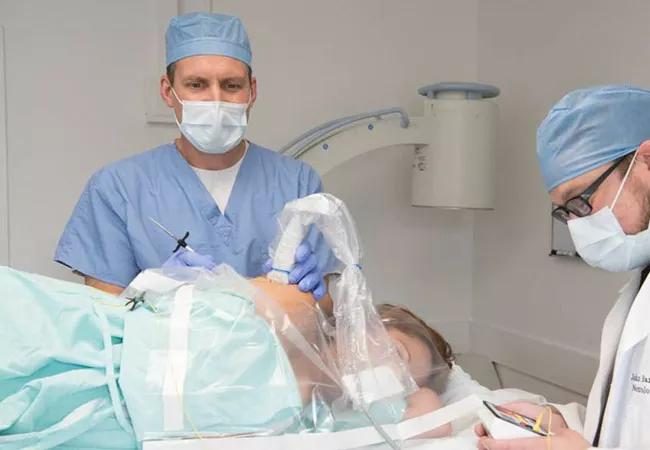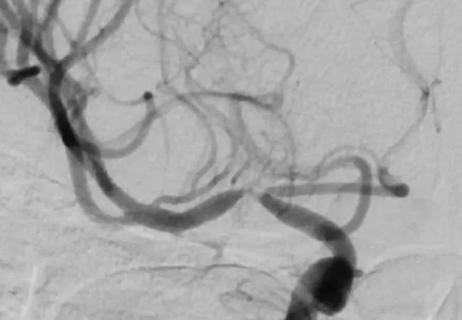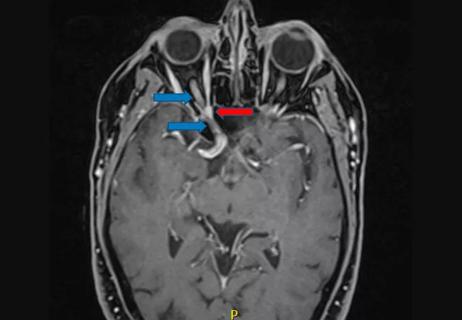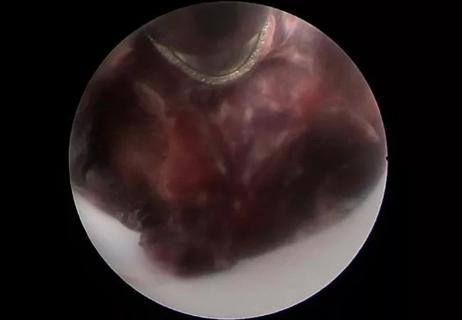A therapy well matched to PM&R’s purview

By Michael Schaefer, MD
Cleveland Clinic is a non-profit academic medical center. Advertising on our site helps support our mission. We do not endorse non-Cleveland Clinic products or services. Policy
A 64-year-old woman who had a stroke in 2007 presented to Cleveland Clinic’s Department of Physical Medicine and Rehabilitation (PM&R) in spring 2017 complaining of hemiplegic pain and weakness in her left shoulder.
She was unable to take anti-inflammatory medications due to stroke risk. She had tried transcutaneous electrical stimulation (TENS) for her shoulder pain and underwent physical therapy and occupational therapy, all without much relief. She took the muscle relaxant baclofen and amitriptyline to help her sleep.
She was referred by her neurologist for possible implantation of the Bioness StimRouter™, a minimally invasive implantable neuromodulation device designed to treat chronic peripheral nerve pain. The device received FDA clearance in 2015. Cleveland Clinic PM&R physicians began offering StimRouter implantation earlier this year.
The patient was a good candidate due to her prolonged shoulder pain, lack of relief from conservative measures and sufficient cognition to operate the self-programming device. She had the device implanted in an outpatient procedure in June 2017 and returned for device activation one month later. Upon activation, she immediately noted relief of pain — from 7/10 to 4/10 — and an improved ability to do range-of-motion exercises. She also noted improved sensory function in her left arm. She was referred to occupational therapy for further rehabilitation.
Hemiplegic shoulder pain is common after stroke, often limiting daily living activities. While many patients achieve relief from conservative interventions (e.g., physical therapy, cortisone injections, oral medication) within six months to one year, some do not. Such patients are often candidates for neuromodulation if they have adequate cognition and are free from infection and severe cardiac and pulmonary issues.

The StimRouter device lead.
StimRouter implantation takes 30 to 45 minutes and typically involves light or no sedation. The axillary nerve and adjacent blood vessel are located via ultrasound (X-ray or fluoroscopic guidance can also be used). A small puncture wound is made with a scalpel, and a testing simulator probe is advanced to the target location. A test stimulation is conducted to check for motor contractions of the teres minor muscle. Then a small introducer tube is inserted over the stimulator probe.
After test stimulation, the device lead with an integrated receiver is placed through the introducer to the implantation site. These leads are also tested with stimulation, after which the introducer is removed and the device lead’s built-in anchors hold it in position. The receiver end of the lead is tunneled through the subcutaneous tissue via a second small puncture incision to the site where the external transcutaneous stimulator will be placed. The incisions are closed with wound closure strips or two or three small sutures. The device lead remains fully implanted under the skin surface, and stimulation is provided via an external pulse generator.
Programming of the stimulator is performed three to four weeks after implantation. At this follow-up visit, two or three different programs are designed, to provide analgesia and (separately) motor stimulation. The patient is taught how to operate the stimulator by handheld wireless remote control.
As of mid-July 2017, Cleveland Clinic PM&R physicians had implanted four such devices, with good outcomes to date. Three patients had hemiplegic shoulders, and one had an above-knee amputation with neuropathic pain in the sciatic distribution. The first shoulder patient reported dramatic pain relief, and the three subsequent patients reported approximately 60 percent pain reduction, on average.
The procedure is a good option for patients with hemiplegic shoulder pain, but it may be used in both upper and lower limbs for neuropathic pain related to entrapment syndromes, neuralgias and other peripheral injuries or diseases. It is non-pharmacologic and fully adjustable and can potentially offer more complete pain relief than other therapies.
The procedure is often performed by pain management physicians, but PM&R physicians are ideally suited to implant the StimRouter as well. They are well-versed in the musculoskeletal system and treatment of shoulder pain, so they can rule out other pain causes, such as arthritis, tendon ruptures or cervical radiculopathies.
Physicians who offer this procedure should have solid ultrasound skills and receive hands-on implantation training from an experienced clinician. There can be a steep learning curve, so patience is a must.
There is currently another peripheral nerve stimulator on the market for use in hemiplegic shoulder pain — the SPRINT PNS, a percutaneous system that attaches wires directly to an external generator for 30 days. It’s designed for temporary relief during initial phases of rehabilitation.
The StimRouter and SPRINT PNS are both first-generation neuromodulation devices, and the technology will continue to improve. While appropriate patient selection is key, peripheral nerve stimulation appears to be a solid option for patients with post-stroke shoulder pain who have exhausted more conservative therapies.

When specialized surgery makes sense for moyamoya syndrome

Multilevel cervical fusion restores function in an athletic 78-year-old

Case study underscores the imperative for thorough evaluation with SEEG

Schwannoma of the lacrimal nerve threatened right eye blindness

Case report demonstrates utility in a brain-injured patient

Partial resection plus radiation leads to good outcome from an unpredictable tumor

Diagnosis and treatment of rotational vertebrobasilar insufficiency syndrome

First reported case expands use of minimally invasive techniques